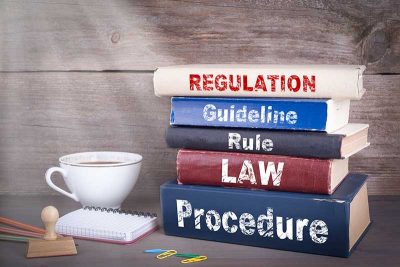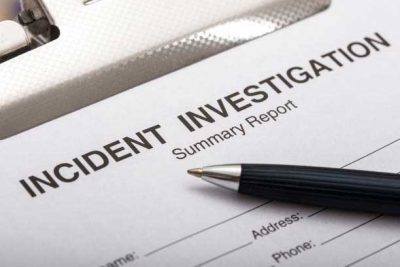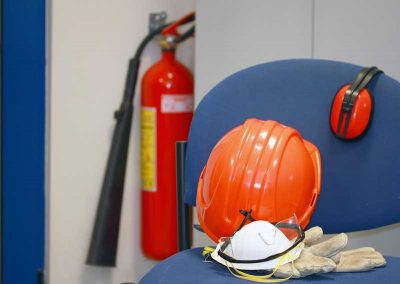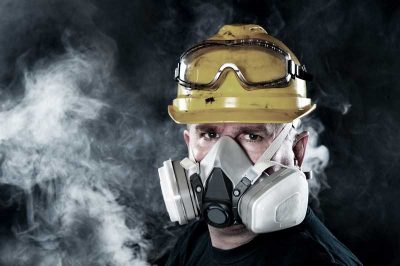Safety Program Development
Our team of consultants has a wealth of experience and knowledge in many related areas to help develop your Safety Management Systems. These areas include but are not limited to:

- Management leadership and commitment
- Safe work procedures and written instruction
- Health & Safety training and instruction
- Identifying hazards and managing risks
- Inspection of the workplace including premises, equipment and work practices
- Investigation of incidents
- Joint Occupational Health & Safety Committee
- Health & Safety Programs
- Program administration and review
Our team of consultants has a wealth of experience and knowledge in many related areas to help develop your occupational health and safety program(s). These areas include but are not limited to:

- WHMIS
- Working Alone or In Isolation
- Personal Protective Equipment
- Violence in the Workplace
- Emergency Procedure
- De-energization and lockout
- Confined Space
- Fall Protection
- Process Safety
- Incident Investigation
- Contractor Management
- Joint Occupational Health & Safety Committee (JOHSC)
Our team of consultants has a wealth of experience and knowledge in many related areas to help develop your safe work procedures. These areas include but are not limited to:

- Confined space entry
- Working with lead and/or asbestos-containing materials
- Working from heights
- Heat and cold stress
- Working alone
- Working with toxic process gases
- Emergency procedures
- Violence in the Workplace
An Exposure Control Plan (ECP) is a document created by a workplace that is used as a source of information in response to an identified risk. It documents the appropriate controls that will minimize or eliminate that risk. Every workplace is responsible for developing an ECP in response to an identified risk of exposure to workers. It must be reviewed annually by the workplace.
Our team of consultants has a wealth of knowledge and experience providing exposure control plans in hazards including but not limited to:
- Asbestos
- Silica
- Lead
- Toxic process gases (e.g. ammonia, ozone, chlorine)
- Biological hazards (e.g. blood borne diseases)
WorkSafeBC Compliance
 WorkSafeBC is the regulatory agency of British Columbia that works to prevent occupational injury and disease through the Workers Compensation Act and Occupational Health & Safety Regulation. In addition to complying with WorkSafeBC requirements, your organization must be able to demonstrate due diligence to WorkSafeBC in response to an audit, inspection or incident investigation.
WorkSafeBC is the regulatory agency of British Columbia that works to prevent occupational injury and disease through the Workers Compensation Act and Occupational Health & Safety Regulation. In addition to complying with WorkSafeBC requirements, your organization must be able to demonstrate due diligence to WorkSafeBC in response to an audit, inspection or incident investigation.
Our team of experienced and professional consultants is able to advise your organization of requirements and documentation needed to meet compliance of the Workers Compensation Act and Occupational Health & Safety Regulation.
 WorkSafeBC is the regulatory agency of British Columbia that works to prevent occupational injury and disease through the Workers Compensation Act and Occupational Health & Safety Regulation. If WorkSafeBC has inspected your workplace and has issued an order or penalty, you will require action to comply.
WorkSafeBC is the regulatory agency of British Columbia that works to prevent occupational injury and disease through the Workers Compensation Act and Occupational Health & Safety Regulation. If WorkSafeBC has inspected your workplace and has issued an order or penalty, you will require action to comply.
Our team of experienced and professional consultants is able to work with your organization to complete the actions required to obtain and maintain compliance with any non-compliance orders or penalties identified by WorkSafeBC.
Inspections & Auditing
Our team of consultants has a wealth of experience and knowledge in providing numerous auditing services including but not limited to:

- Safety Management Systems
- Safety Program(s)
- Hazard identification, assessment and control
- Safe job practices and procedures
- Due Diligence record-keeping
- Inspections
- Investigations
- Education, training and supervision
- Emergency Preparedness
- Joint Occupational Health and Safety Committee
- Audit tool development
- Prevent and reduce hazards and injuries by identifying and correcting health and safety deficiencies
- Increase safety education and awareness among workers by engaging them in questions and, where possible, correcting unsafe acts and conditions on the spot.
- Demonstrate due diligence with compliance of the Workers Compensation Act and Occupational Health & Safety Regulation
- Demonstrate organizational commitment to health & safety in the workplace.
Our team of consultants has a wealth of experience and knowledge in providing an array of inspection types (i.e. location, equipment, material and people) and frequencies, in numerous workplace environments, that include but are not limited to:

- Construction
- Office settings
- Public spaces
- Tenanted spaces
- Loading docks and warehouses
- Industrial sites
- Hazardous material
- Hospitality settings
Incident Investigations
 Employers are responsible for investigating workplace injuries and incidents that had the potential to cause serious injury. By investigating incidents and near misses, employers are able to identify root causes and implement corrective action to prevent similar incidents from occurring in the future.
Employers are responsible for investigating workplace injuries and incidents that had the potential to cause serious injury. By investigating incidents and near misses, employers are able to identify root causes and implement corrective action to prevent similar incidents from occurring in the future.
In the unfortunate event of an injury or incident in your organization, our team of experienced and professional consultants can help. We are able to work with your organization to fulfill WorkSafeBC requirements by identifying contributing factors and root causes. We will work with your organization to implement corrective actions to reduce risk and prevent similar incidents from occurring in your organization.
Personal Protective Equipment

Employers are responsible for providing workers with Personal Protective Equipment (PPE), but responsibility does not end there. Employers are also responsible for ensuring:
- The right PPE is used for the job
- PPE fits workers and is compatible with other PPE
- Workers are trained in how to properly wear and store PPE
- PPE is regularly cleaned, inspected, and maintained
Our team of experienced and professional consultants can help develop your Personal Protective Equipment program and ensure employers, supervisors and workers are knowledgeable in their responsibilities when it comes to PPE and using the right PPE for the job.
In accordance with WorkSafeBC Regulation 8.32, a respirator is required if a worker is or might be exposed to hazardous air contaminants in the workplace. These hazardous air contaminants may be in the form of gas or vapour, particulate, or a combination thereof.
It is the responsibility of the employer to provide an appropriate respirator and ensure that workers use an appropriate respirator. As per WorksafeBC Regulation 8.40, a respirator must not be issued to a worker unless a fit test demonstrates that the facepiece forms an effective seal with the wearer’s face.
 A fit test is typically required prior to initial use and annually as per WorkSafeBC regulation; however, other conditions may warrant an earlier fit test, including:
A fit test is typically required prior to initial use and annually as per WorkSafeBC regulation; however, other conditions may warrant an earlier fit test, including:
- Where there is a change in respirator facepiece, including the brand, model and size
- Changes to the user’s physical condition that could affect the respirator fit (e.g., gained/lose weight)
Arcose offers both qualitative and quantitative fit testing in accordance with CSA Standard. Our team of competent technicians is capable of delivering on-site respirator fit testing to workers.
